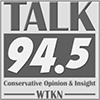Health Care Spending Trends
For the 40+ year period of 1961 to 2002, health care expenses followed a pretty steady upward trend, thanks to things like the introduction of Medicaid, coverage expansion and occasional price increases.1
But between 2003 and 2007, that rampant growth slowed down considerably, and the impact of the recession was felt from 2008-2013.2 Many Americans lost their health care insurance during this time period or stopped going to the doctor because of the money they had to pay out of pocket. Several drug patents also ran out during this 10-year stretch, so the market began to be flooded with new, cheaper generic drugs.3
Since then, however, spending has creeped back up. The cost of large employers providing insurance to their workforce is projected to increase by 5 percent in 2017, while premium increases for public exchange plans are expected to average about 10 percent.4 Employers report they plan to offset increases by:5
- Managing pharmacy spending for high-cost specialty drugs
- Increasing enrollment in high-deductible health plans with tax-advantaged savings accounts
- Steering plan members to hospitals and medical centers with a good track record for treating things like back, knee, cardiac and infertility issues
- Moving to benefit designs that require employees to participate in health-related activities to reduce employee cost-sharing
Pharmaceutical costs represent approximately 20 percent of employer medical spending, and are increasing at a rate that accounts for roughly half of medical cost inflation.6 Just recently, drug manufacturer Mylan NV came under fire for its 500 percent price increase (since 2007) for the EpiPen emergency allergy injection.7
Meanwhile, specialty drugs, such as those developed for cancer, can cost thousands of dollars per month. Last year, spending on specialty drugs increased by 18 percent compared to less than 1 percent for standard prescription drugs.8
Four of the largest health insurance companies believe the way to reduce spending is by consolidating, but the Justice Department isn’t so sure. The Anthem/Cigna and Aetna/Humana merger deals are being heavily scrutinized since they would substantially reduce competition within the industry.9 The question remains whether the big five — which potentially could become the big three — would pocket profits resulting from consolidations or pass those savings on to customers.10
Content prepared by Kara Stefan Communications.
1 Aaron C. Catlin and Cathy A. Cowan. Centers for Medicare & Medicaid Services. Nov. 19, 2015. “History of Health Spending in the United States, 1960-2013.” https://www.cms.gov/Research-Statistics-Data-and-Systems/Statistics-Trends-and-Reports/NationalHealthExpendData/Downloads/HistoricalNHEPaper.pdf. Accessed Aug. 26, 2016.
2 Ibid.
3 Ibid.
4 David McCann. CFO.com. Aug. 9, 2016. “Specialty Drugs Drive Health Care Cost Trend.” http://ww2.cfo.com/health-benefits/2016/08/specialty-drugs-drive-health-care-cost-trend/. Accessed Aug. 26, 2016.
5 Willis Towers Watson. Aug. 8, 2016. “U.S. employers expect health care costs to increase 5.0% in both 2016 and 2017.” https://www.willistowerswatson.com/en/press/2016/08/us-employers-expect-health-care-costs-to-increase-5-percent. Accessed Sept. 2, 2016.
6 Willis Towers Watson. Dec. 15, 2015. “Employers Take Aim to Curb High Cost of Pharmacy Benefits.” https://www.towerswatson.com/en-US/Press/2015/12/employers-take-aim-to-curb-high-cost-of-pharmacy-benefits. Accessed Sept. 2, 2016.
7 Toni Clarke and Ransdell Pierson. Reuters. Aug. 25, 2016. “Mylan offers discounts on EpiPen amid wave of criticism.” http://www.reuters.com/article/us-mylan-nl-pricing-idUSKCN11017J. Accessed Aug. 26, 2016.
8 Alison Kodjak. NPR. March 14, 2016. “Cancer And Arthritis Drugs Drive Up Spending on Medicines.” http://www.npr.org/sections/health-shots/2016/03/14/470417680/cancer-and-arthritis-drugs-drive-up-spending-on-medicines. Accessed Aug. 17, 2016.
9 Jay Hancock. NPR. Aug. 11, 2016. “In Battle of Health Care Titans, Should Insurers Act Like Wal-Mart?” http://www.npr.org/sections/health-shots/2016/08/11/488891554/should-big-insurance-become-like-walmart-to-lower-health-costs. Accessed Aug. 26, 2016.
10 Ibid.
We are an independent firm helping individuals create retirement strategies using a variety of insurance products to custom suit their needs and objectives. This material is intended to provide general information to help you understand basic retirement income strategies and should not be construed as financial advice.
The information contained in this material is believed to be reliable, but accuracy and completeness cannot be guaranteed; it is not intended to be used as the sole basis for financial decisions. If you are unable to access any of the news articles and sources through the links provided in this text, please contact us to request a copy of the desired reference.
AE09165117B









